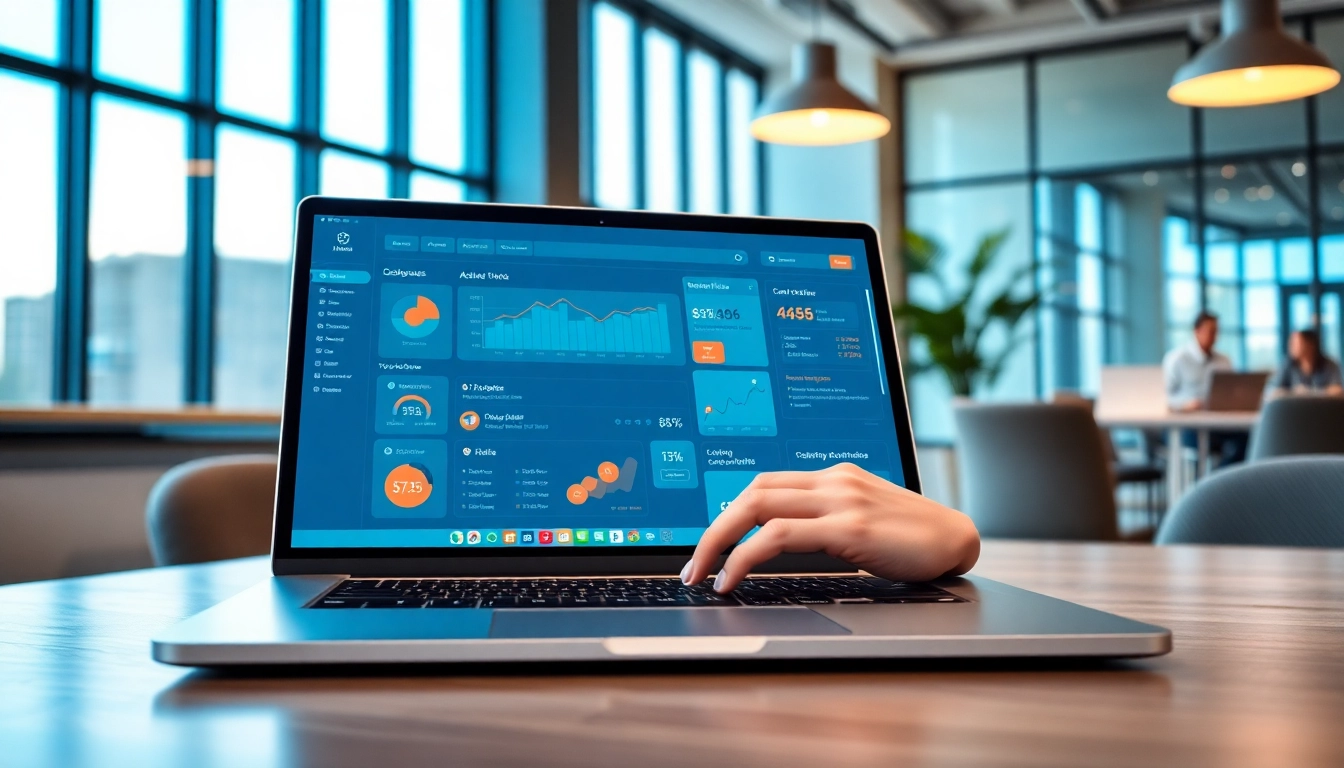
Understanding the AI Funnel Builder
What is an AI funnel builder?
In the realm of digital marketing and online sales, an AI funnel builder represents an innovative, automated approach to creating marketing funnels. These tools leverage artificial intelligence to streamline the process of designing, implementing, and optimizing sales funnels. By utilizing algorithms and machine learning capabilities, an AI funnel builder can generate creative solutions and insights that would otherwise require extensive manual input and market research.
Key features of the AI funnel builder
AI funnel builders are equipped with a variety of features designed to enhance user experience and drive results. Some of the most common features include:
- Drag-and-Drop Interface: This user-friendly feature allows marketers to create funnels easily without any coding knowledge.
- Pre-Designed Templates: Many AI funnel builders offer a range of customizable templates suited for different industries, making it simple to get started.
- Analytics and Reporting: Robust analytics tools provide insights into user behavior, conversion rates, and overall funnel performance.
- Integration Capabilities: They often integrate seamlessly with other marketing tools and platforms, allowing for a more holistic approach to campaign management.
- AI-Powered Recommendations: Some AI funnel builders utilize algorithms to suggest changes and optimizations based on historical data and user interactions.
Benefits of using an AI funnel builder
Using an AI funnel builder presents numerous benefits which can significantly improve the efficiency and effectiveness of your marketing strategy:
- Time Savings: Automated processes reduce the time required to build and deploy funnels while maintaining quality.
- Higher Conversion Rates: With data-driven insights, marketers can create more effective funnels that resonate with their target audience.
- Reduced Costs: Saving time and improving conversion rates can lead to lower overall marketing expenses.
- Enhanced Customer Experience: Personalized funnels improve user engagement and satisfaction, leading to repeat business.
- Continuous Improvement: AI tools can analyze performance data over time, enabling continual optimization of marketing strategies.
Setting Up Your First Funnel
Getting started with the AI funnel builder
Embarking on your funnel journey can be daunting, but utilizing an AI funnel builder simplifies this process considerably. Start by selecting a user-friendly platform that aligns with your specific marketing goals. Follow these initial steps to set up your first funnel:
- Sign Up: Create an account with your chosen funnel builder and familiarize yourself with the dashboard and features.
- Define Your Goals: Clarify what you aim to achieve with your funnel, such as generating leads, driving sales, or increasing brand awareness.
- Target Audience Identification: Determine who your ideal customer is to tailor your funnel accordingly.
Selecting templates and customization options
Most AI funnel builders offer a range of templates designed for various objectives. Once you have selected a template that aligns with your goals, customization becomes key to standing out:
- Branding: Adjust colors, fonts, and images to ensure the funnel reflects your brand’s identity.
- Content Creation: Craft compelling copy and visuals that convey your value proposition effectively to your audience.
- Call-to-Action (CTA): Hone in on a strong, clear call-to-action that prompts users to take the next step.
Integrating tools and services
An essential aspect of setting up your funnel is integrating the right tools and services. Key integrations may include:
- Email Marketing: Connect your funnel to an email service provider to nurture leads through automated email sequences.
- CRM Systems: Integrate with CRM tools for seamless lead management and tracking.
- Payment Processors: For sales-focused funnels, ensure your payment gateways are set up properly to facilitate purchases.
Strategies for Optimizing Your Funnel
Analyzing data with the AI funnel builder
To optimize funnel performance, ongoing data analysis is crucial. Use the reporting tools in your AI funnel builder to track key performance indicators (KPIs) such as:
- Conversion Rates
- Bounce Rates
- Engagement Metrics
- Traffic Sources
Regularly reviewing these metrics will allow you to identify what works and what needs improvement.
Refining your targeting and messaging
As you gather data, your understanding of your audience will evolve. Use this knowledge to refine your targeting and adjust your messaging effectively:
- Segmentation: Divide your audience into segments to tailor messages specifically meant for each group.
- A/B Testing: Experiment with different headlines, CTAs, and layouts to determine what resonates most with your audience.
- Feedback Mechanisms: Incorporate surveys or feedback forms to gather direct input from users about their experiences.
Implementing A/B testing for funnels
A/B testing is a powerful strategy for optimizing funnels. Conduct these tests by comparing two versions of a funnel element to determine which performs better. Key components to test include:
- Headlines
- Images and Videos
- Offer Placement
- CTA Colors and Wording
Implement insights from A/B testing to continuously improve conversion rates.
Best Practices for Funnel Conversion Rates
Understanding customer journey mapping
To maximize conversions, businesses must understand the customer journey — the path customers take from awareness to purchase. Mapping this journey can help identify key touchpoints where adjustments may improve the experience. Focus on:
- Identifying Pain Points: Recognize frustrations that may cause potential customers to abandon their journey.
- Enhancing Key Touchpoints: Optimize high-impact interactions to provide value and facilitate conversion.
- Creating a Smooth Transition: Ensure a seamless flow through the phases of awareness, interest, decision, and action.
Utilizing persuasive content in the funnel
Compelling content is critical to engaging users and converting them into customers. Leverage persuasive techniques like:
- Emotional Appeals: Craft stories that resonate with your audience emotionally to create a connection.
- Social Proof: Showcase testimonials, case studies, and reviews to build trust and credibility.
- Scarcity and Urgency: Incorporate limited-time offers or exclusivity to motivate prompt decision-making.
Continuous monitoring and adjustments
Optimization of a marketing funnel is an ongoing process. Regularly monitoring performance and making adjustments ensures your funnel stays effective. Best practices include:
- Scheduled Reviews: Set regular intervals for reviewing funnel performance.
- Real-Time Analytics: Utilize tools that provide real-time insights to act quickly on optimization opportunities.
- Benchmarking: Compare your funnel metrics against industry standards to gauge performance.
Advanced Techniques to Enhance Your Funnels
Leveraging automation within your AI funnel builder
Automation is a valuable feature of an AI funnel builder that can significantly streamline processes. Here are areas where automation can be leveraged:
- Email Sequences: Automate follow-up emails to nurture leads based on user actions.
- Lead Scoring: Use AI to prioritize leads based on engagement levels and likelihood to convert.
- Task Automation: Integrate with tools to automate repetitive tasks, such as posting social media updates or generating reports.
Integrating lead scoring and follow-up strategies
Lead scoring techniques help identify which leads are most likely to convert. By integrating these strategies within your AI funnel builder, you can enhance follow-up approaches:
- Scoring Criteria: Define criteria for scoring based on behavioral data, such as website visits, email opens, and interactions.
- Personalized Follow-Ups: Tailor follow-up messages based on lead scores to engage them appropriately.
- Action Triggers: Create automated actions based on scores, such as sending a special offer to high-scoring leads.
Using advanced analytics for better performance
Advanced analytics allows for deeper insights into funnel performance. Utilize techniques such as:
- Attribution Modeling: Understand the impact of different channels and touchpoints on conversion rates.
- Customer Lifetime Value (CLV) Analysis: Assess the long-term value of customers acquired through your funnel to inform marketing spend.
- Predictive Analytics: Implement algorithms to forecast future behavior and trends among your audience.







